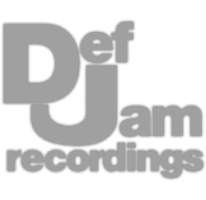Professional Analog Mastering.
Professional Analog Mastering.










When mixing high end, the main tool you’ll use is an equalizer, with which you can amplify the highs, and expand the highs if the EQ is mid-side. Other useful tools are frequency-specific saturation, a compressor with a short attack and release settings, and airy reverb.
When mixing, vocals can be a challenge to make bright but not harsh - here’s the quickest way to accomplish this. Start with a de-esser, and use a shelf filter to attenuate the high-frequency range - then use an equalizer to amplify the range that the de-esser attenuated.
The Weiss de-esser is a great option for this but use whatever works for you. Let’s listen to a before and after, and pay attention to how the high end is present, but the sibilance of the vocal is no longer aggressive.
If you have a stereo instrument, like a drum loop or synth, you can use a dynamic mid-side EQ to amplify the high-frequency range and expand the stereo image simultaneously. To do this, create a high-frequency shelf, make it dynamic, and place the band on the side.
If you have a mid-side eq that doesn't have dynamics, that’s fine too, just know that the processing will occur constantly in that case.
Let’s take a listen and notice the subtle brightening and widening this effect has.
When mixing drums, we can use specific settings to accomplish transient expansion via mild distortion. What I’ll do is set a super quick attack and release time so that the waveform distortions when compression occurs - then I’ll use a hard knee, and auto-make-up gain.
If available, also isolate the compression’s monitoring to only the high frequencies via an internal side chain, and use an aggressive algorithm.
Let’s listen and pay particular attention to how this amplifies the high hats on this drum loop.
Similar to chapter 2, this trick is going to take a special plugin, but if you have Eventide’s Split EQ, we can amplify the transients of the high frequency. Using the green or transient band, I’ll amplify the highs with a shelf by a few dB.
In turn, the plugin will amplify the quickest parts of the high-frequency range, making it brighter and more dynamic. This EQ works particularly well on drums, similar to the compression discussed in the previous chapter.
Let’s take a listen and notice how quickly this EQ can amplify high-frequency transients.
For this trick I’m going to send some of my instruments to a bus, then insert a linear phase EQ that isolates the high frequencies using a high-pass filter. This EQ needs to be linear phase so that the bus stays in time with the original signal.
Now that I have these frequencies isolated I can increase the level of the auxiliary track to increase the high end of these instruments.
Let’s take a listen to this trick and see what exactly is being amplified.
Typical NY style compression includes setting up parallel compression on an Aux track, then equalizing it, but in this trick, we’ll use the same auxiliary send from the previous chapter and compress after the equalization. This way I’m only compressing my high frequencies, giving me a lot more control.
I’m going to use the same compression settings from chapter 3, and distort my transients using short attack and release, and a hard knee.
Let’s listen to how this combination creates an enjoyably clicky sound, that works well when blended into the original signal.
High-frequency distortion is a quick way to increase the high end of an instrument - furthermore a tube distortion setting will expand transients, making them easier to hear. If we combine these 2 concepts, then high-frequency tube distortion is a great way to increase high-end detail.
I’ll use Saturn 2 and isolate the tube distortion to my highs. I’ll also amplify the highs to make the keys I’m affecting a little brighter.
Let’s listen and notice how high-frequency distortion is really helping to augment the key track’s clarity.
On the same auxiliary send, we used in chapters 5 and 6, I’m going to insert what I think is a pretty special reverb plugin. Logic’s stock reverb Chroma verb isn’t considered a great reverb due to its somewhat unnaturally bright, chimey sound, but it’s useful for that very reason.
On the main page, I’ll use the Airy algorithm, and increase the density to 100% - then, in the details window, I’ll boost the highs, emphasize early reflections, and increase the reflection’s stereo width.
This reverb definitely won’t sound natural, but it’ll add a very cool effect. Let’s listen to the subtle high-frequency layer that this reverb creates in our mix.
If you’re looking for the easiest way to add brightness or create a more noticeable high end to any instrument or bus, try Fresh Air by Slate Digital. It’s a free plugin that lets you amplify the highest aspects of your signal, by using 2 aggressive shelf filters.
Let’s listen to the effect that this plugin has on an air bell in this mix.